Ghost stories and haunted houses are my absolute favorites in horror, so I actively seek them out. But due to the quirks of my brain and the busyness of everyday life, I don’t have the focus to read books of standard or more length. I’ve kept to reading comics, novellas, and short stories for the last decade or so. When Tor.com started releasing their novellas in paperback, I bookmarked several of them, and that’s how I found The Atrocities. Gorgeous cover, interesting premise (twisted human-like statues in a maze? YES!), and a manageable page count all cinched it for me.
Plus, I follow Shipp on Twitter and his feed is absolutely a gem: “I don’t know who needs to hear this but a diorama exists depicting your life at this very moment, being viewed by a dozen pale monstrosities in a chthonian cavern,” or “I don’t know who needs to hear this but every time you fall asleep, a giant maggot with human arms pantomimes everything you forgot to do when you were awake.” I feel like more people need to see what he puts out into the world, so that’s why I chose his work for our Book Club.
 The Atrocities (2018)
The Atrocities (2018)
Written by: Jeremy C. Shipp
Genre: Gothic Fantasy/Horror
Pages: 102 (Paperback)
Publisher: Tor.com
The Premise:
Jeremy Shipp brings you THE ATROCITIES, a haunting gothic fantasy of a young ghost’s education…
When Isabella died, her parents were determined to ensure her education wouldn’t suffer.
But Isabella’s parents had not informed her new governess of Isabella’s… condition, and when Ms. Valdez arrives at the estate, having forced herself through a surreal nightmare maze of twisted human-like statues, she discovers that there is no girl to tutor.
Or is there…?
As this is a book club discussion, there will be spoilers!
Discussion
Readers define horror in different ways. For some, the only qualifier is that it must be scary. For others, what makes horror is the feeling of unease or dread, or meeting with the uncanny…or looking into an abyss that stares back. For me, the horror that comes from The Atrocities lies in the realm of the psychological, and I had a response to it that speaks to a more traditional definition of horror: the feeling of revulsion that follows the experience of something disturbing or unpleasant.
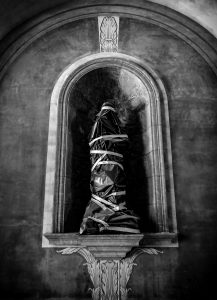 This book bothered me, and I mean that as a compliment. The Atrocities challenged me because I had to wade through some familiar, albeit long-shelved feelings that are most certainly unpleasant and a source of horror for me. And for that to make sense to you, I have to come right out and admit something personal: I was diagnosed with mental illness; one that is chronic and manageable, but incurable. Though it has been many, many years since I’ve been ill to the point of disruption, I can still remember how in its more severe manifestations I experienced symptoms just shades away from psychosis, as well as parasomnia that included the most vivid nightmares and supernatural images my mind could conjure. Thus The Atrocities summoned impressions reminiscent of darker, earlier times in my life where I had difficulty with reality; I struggled with this book because it made me doubt myself and my senses as I read it.
This book bothered me, and I mean that as a compliment. The Atrocities challenged me because I had to wade through some familiar, albeit long-shelved feelings that are most certainly unpleasant and a source of horror for me. And for that to make sense to you, I have to come right out and admit something personal: I was diagnosed with mental illness; one that is chronic and manageable, but incurable. Though it has been many, many years since I’ve been ill to the point of disruption, I can still remember how in its more severe manifestations I experienced symptoms just shades away from psychosis, as well as parasomnia that included the most vivid nightmares and supernatural images my mind could conjure. Thus The Atrocities summoned impressions reminiscent of darker, earlier times in my life where I had difficulty with reality; I struggled with this book because it made me doubt myself and my senses as I read it.
Ghost stories, especially haunted house stories, are concerned with the psyche, and often the ghosts are metaphors for something else going on with the characters: memories haunt them. Experiences, emotions, and ordeals haunt them. Characters are already psychologically compromised when they take their role in the ghost story, so when the symptoms of a haunting appear, we can’t entirely trust what we see through their eyes, as their vision is already clouded by something else: trauma.
I was already psychologically compromised when I cracked open the cover of this book. Its heroine, Ms. Valdez, is likewise compromised, dealing with the aftermath of her son’s death. When someone is already vulnerable to reality, the horror intensifies whenever there is an encounter with something that challenges it.
In my case, The Atrocities challenged my expectations of what a gothic horror story should be.
From the opening pages:
Turn left at the screaming woman with a collapsing face. Turn right at the kneeling man with bleeding sores the size of teacups. If you come across a big-breasted bear with a child’s head in her jaws, you’re going the wrong way (9).
 This is a letter of instructions for Ms. Valdez to navigate her way through the hedge maze and its plethora of disturbing statuary to reach the front door of Stockton House. These sculptures, called the Atrocities, depict acts of sin and punishment from the Bible in very vivid and disturbing ways, which hits all the marks on my personal horror aesthetic checklist. And yet the prose, the description of those statues, still threw me for a loop when I read it the first time. These statues are what I expected, but not (and you’re not even explicitly told they are statues right away). The writing is all very straightforward and blunt — no flowery dressing-up of language or purple prose, no deliberation over mood and tone; no easing into anything. It’s fast-paced. Just, BAM! This is what we see; this is what it is. It’s deceptively simple writing that makes it easier for the reader to drop their guard a little bit until the next jolt of reality hits.
This is a letter of instructions for Ms. Valdez to navigate her way through the hedge maze and its plethora of disturbing statuary to reach the front door of Stockton House. These sculptures, called the Atrocities, depict acts of sin and punishment from the Bible in very vivid and disturbing ways, which hits all the marks on my personal horror aesthetic checklist. And yet the prose, the description of those statues, still threw me for a loop when I read it the first time. These statues are what I expected, but not (and you’re not even explicitly told they are statues right away). The writing is all very straightforward and blunt — no flowery dressing-up of language or purple prose, no deliberation over mood and tone; no easing into anything. It’s fast-paced. Just, BAM! This is what we see; this is what it is. It’s deceptively simple writing that makes it easier for the reader to drop their guard a little bit until the next jolt of reality hits.
Stockton House is topsy-turvy, full of bizarre and grotesque images: freakish statues, gruesome paintings, stained-glass nightmares. Again, this all aligns with my expectations, and yet The Atrocities challenged them time and again, and that feeling of cognitive dissonance created another source of discomfort for me. I came into the book expecting I knew what a haunted mansion looked like, and was met with things that frequently challenged that reality, like the fact that Stockton House has “eighty-four-inch, high definition televisions installed in all the living quarters” (11).
So from the very get-go, as a reader, I’m being disarmed. Again, I was already vulnerable to reality when I started reading. Then Shipp’s stark prose lulled me into thinking it was easy to be aware of what was going on. At the same time, I’m being hit with images and words that chip away at what I think I know a gothic haunted house tale should be. And this is ALL ACCOMPLISHED IN FOUR PAGES. Very, very early on I took a moment to say to myself, “Ok, I thought I knew what I was reading, but I don’t.”
Our window into Stockton House is Ms. Valdez, who is the first-person POV character, and while she’s our anchor in the story, I mentioned above, she’s already compromised by the trauma of the loss of her son. The dreams of her in the hospital are particularly creepy, all the more because the transitions between asleep and awake are abrupt and disconcerting.
 Her waking life still seems dreamlike as long as she remains in Stockton House. While Ms. Valdez is working through her bizarre situation — tutoring the dead Isabella, who could be a hallucination triggered by Mrs. Evers’s grief as opposed to being an actual ghost — the creepy environment of the house sets the stage for her own hallucinatory experiences. Through Ms. Valdez, it’s very easy to not be able to tell (or expect) what is happening, let alone tell if it’s real.
Her waking life still seems dreamlike as long as she remains in Stockton House. While Ms. Valdez is working through her bizarre situation — tutoring the dead Isabella, who could be a hallucination triggered by Mrs. Evers’s grief as opposed to being an actual ghost — the creepy environment of the house sets the stage for her own hallucinatory experiences. Through Ms. Valdez, it’s very easy to not be able to tell (or expect) what is happening, let alone tell if it’s real.
I sit at the bench, in the cool shadow of a jacaranda tree. My woven satchel leans against my ankle, but I left all my folders back in the classroom. I kick off my shoes. An electric blue butterfly spirals from above onto my foot and lies flat on my flesh. No. That’s only a petal.
I look up, and a creature with a long hairy face scrambles out of the fountain. The giant guinea pig rushes in my direction, dragging a wet, wilted tutu under its belly. I know I should run, but my body freezes. A little voice whispers that this is the stuffed animal from the hallway come to life (41).
When it comes to language, particularly reading, I have trouble sometimes with picking up on figurative speech. I have a tendency to take what I see or hear as is, which I think is just another quirk of my particular brain. I do get things like metaphor and symbolism, but sometimes things just take a second to click. So for the opening pages mentioning the Atrocities, I’m embarrassed to say, I took that all literally and didn’t realize they were statues at first. The description here of a giant guinea pig — my brain also went literal there. I also accepted at face value the observation that it’s a living version of a stuffed animal, when in real life it turns out to be Bell’s pet capybara…which, oddly enough, felt more absurd once it was revealed to be real. You see, my brain said, THIS IS A HAUNTED HOUSE STORY WITH GHOSTS AND IT’S TOTALLY PLAUSIBLE FOR A DEAD GIRL’S STUFFED ANIMAL TO COME TO LIFE BECAUSE GHOSTS, and yet when I was greeted with the fact that someone would actually cough up the money to buy a live capybara to give to their daughter (complete with wearing a tutu) I was like, pfffffft, PLEASE. Which, of course, is a totally irrational way of looking at it, because in real life, which is the more plausible? Isn’t it amazing what the mind will do in order to cope with affronts to its personal reality? If something doesn’t make sense, the brain will come up with rules or reasons to force things into an alignment it can handle, hence my insistence on making this ghost story a ghost story in the most literal sense possible.
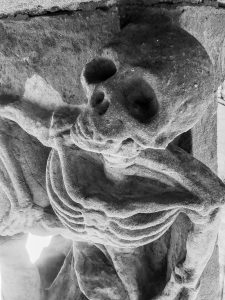 And of course, now that we’ve all read the book, we know that we absolutely are not dealing with that kind of a story. Ghosts as metaphors, check. But literal ghosts? Nope, because the ghost we’ve all been thinking about — Isabella — is actually Mrs. Evers, giggling like a small girl, playing at poltergeist, manifesting her grief in unhealthy ways, “suffering from a shattered psyche” (59). The people in Stockton House are haunted, to be sure, but not by spirits that have “crossed the veil back to the world” (59).
And of course, now that we’ve all read the book, we know that we absolutely are not dealing with that kind of a story. Ghosts as metaphors, check. But literal ghosts? Nope, because the ghost we’ve all been thinking about — Isabella — is actually Mrs. Evers, giggling like a small girl, playing at poltergeist, manifesting her grief in unhealthy ways, “suffering from a shattered psyche” (59). The people in Stockton House are haunted, to be sure, but not by spirits that have “crossed the veil back to the world” (59).
We also learn that Mr. Evers isn’t what he seems, either — not just an eccentric, esoteric artist, but in fact the monster of the story: his sense of reality is equally shattered, as he’s kept Isabella alive and imprisoned in secret. At the confrontation at the end of the book, Mr. Evers pleads with his wife:
You know my heart, Molly. You know I find no greater joy than giving you everything you desire. However, I can’t give you our daughter, because she is beyond our reach. The creatures who stand beside you are not the people you knew. […] They’re abominations […] and their being here in the realm of men is an affront to every rule that binds our reality together. […] They are walking corpses, held together by memories and dreams (100).
In the bizarre, nightmare wonderland that is Stockton House, it turns out, everybody’s a little bit mad. Mr. Evers seems to suffer the worst of it from the weight of multiple realities bearing down on him, if he’s to be believed. From that monologue above, the only observation that seems to ring true is that the characters are “held together by memories and dreams.” For the duration of The Atrocities we experience a whirlwind of visions, dreams, nightmares, hallucinations, and memories; they are the threads that sew the story together, and also generate the main source of fear in The Atrocities. When people see and experience things that are outside of their known reality, the survival mechanism is to ask: “Am I dreaming?” And the true horror comes from the answer: “No, in fact, you are not.”
In Conclusion
Jeremy C. Shipp weaves together a horror tale with an intriguing premise; memorable, disturbing imagery; absurd humor; and stark, clear prose that simultaneously utilizes and uproots the tropes of the genre to demolish reader expectations. Author Paul Cornell described The Atrocities as “a new and very weird dimension to the Gothic, which will stay with you long after it’s over. This is deep, weird, shit.” I wholeheartedly agree with Cornell’s assessment.
 When I first finished The Atrocities, there was no question that it was good writing, but I wasn’t sure that I liked it. This was because it had been such a long time since I read horror fiction that made me feel a primal response — a recoiling from unpleasant things. I felt revulsion for the first time in ages because Shipp successfully brings out the horror you feel from the loss of rationality and the inability to discern reality from delusion. When you lose your sense of self and the world around you, it’s very much like being trapped in the labyrinth. But the first sensation you experience when you come out is “I feel alive” (102), and that makes the journey more substantial than before.
When I first finished The Atrocities, there was no question that it was good writing, but I wasn’t sure that I liked it. This was because it had been such a long time since I read horror fiction that made me feel a primal response — a recoiling from unpleasant things. I felt revulsion for the first time in ages because Shipp successfully brings out the horror you feel from the loss of rationality and the inability to discern reality from delusion. When you lose your sense of self and the world around you, it’s very much like being trapped in the labyrinth. But the first sensation you experience when you come out is “I feel alive” (102), and that makes the journey more substantial than before.
I know that given the unique risks Shipp takes with his writing, The Atrocities will not be everybody’s cup of tea. Readers carry their context with them when they pick up a book, and that context shapes their interpretations of a work — so the horror I felt from The Atrocities may be nothing like what any of you have felt. The vulnerability I already possessed when I started reading may not be something you share with me; the framework of our experiences may have completely shaped the story into strange, separate sculptures of their own. I’d like to know if it has.
Please share your experiences with this book. What worked for you and what didn’t? How did this book challenge (or meet, or fail) your expectations? And above all, I’d like to know… How did The Atrocities create horror for you? I look forward to reading your answers in the comments.
Recommended Reading
The Haunting of Hill House by Shirley Jackson (1959): I read this book after watching Robert Wise’s 1963 film The Haunting in preparation for the 1999 version by Jan de Bont, which I saw in the movie theater in high school (yep, that dates me!). I came back to this book again for a graduate school class, and I’d argue it’s one of the most seminal pieces of modern Gothic fiction where the horror comes from the mind. The very first passage tells us so: “No live organism can continue for long to exist sanely under conditions of absolute reality,” and in the next sentence, Hill House is described as “not sane.” The book chronicles a house that seemingly violates said conditions of reality through its reputation of being haunted; the novel’s heroine, Eleanor, crumbles under the weight of the reality of her life, and through her the reader wanders through the Gothic mansion in a dreamlike state, unable to tell what is real and what isn’t. Memories of the past could be the ghosts wandering the halls, or the spirits of dreams and lives unfulfilled.
Hell House by Richard Matheson (1971): Matheson’s book seems like a nod to Jackson’s aforementioned work in terms of setup: a group of people with varying personalities are assembled in a huge haunted mansion under the premise of a psychological experiment to determine the validity of the supernatural. This was also an assigned reading for graduate school, and while it wasn’t my personal cup of tea, there’s a lot of bizarre and creepy imagery with the house, and the backstory behind the Belasco Mansion is quite interesting (and salacious!). Sexuality and the profaning of the sacred are major sources of psychological horror in this work.
The Yellow Wallpaper by Charlotte Perkins Gilman (1892): I think I was 13 or 14 when I read this, and it was a work I didn’t fully appreciate at the time because a lot of the book’s themes — the subordination of women, the confines of marriage — weren’t on my radar or in my locus of experience. But this book has stayed with me because even now, I can remember the lingering feeling of uneasiness after reading it. The imagery of the wallpaper and the heroine’s psychological unraveling absolutely disturbed me. Growing up I’d find myself staring at wallpaper (sometimes I still do), especially at my Dad’s apartment in NYC, until I could see frightening faces in the twisting scrollwork (I later found out this phenomenon is called pareidolia). Whenever I read passages describing the wallpaper and imagined a woman trapped behind it, I’d think of the weird faces in apartment 2M. And I still can picture the heroine “creeping” in my mind to this day.
Rose Madder by Stephen King (1995): I read this when it came out (and I was in junior high), so a lot of it went over my head at the time; but once again, decades after the fact, images of this book (along with what I felt while reading it) have endured. The novel tells the story of Rose Daniels, who flees the abusive marriage to her violent and vile husband, Norman, who relentlessly pursues her. Then, amid this thriller plot, we’ve also got a portal fantasy that delves into Greek mythology, courtesy of the painting of a woman in a rose madder dress. While there are supernatural elements here — including a journey down the maze of the labyrinth to face the Minotaur — once again, this is a journey of psychological horror and a story that tests sanity (there’s a reason why “madder” is part of the title).
Alice’s Adventures in Wonderland by Lewis Carroll, illustrated by Camille Rose Garcia (2010): There are countless iterations of this book, which is another portal fantasy that leads to a world where “We’re all mad here.” Some of Wonderland is disturbing (The Queen of Hearts, The Duchess, and Walrus and the Carpenter from Through the Looking-Glass, to name a few) but most of it is bizarre and colorful, and I chose Camille Rose Garcia’s version because I think the aesthetic absolutely nails the colorful absurdity, all the while looking creepy and goth at the same time. It’s like a confectionery nightmare and I love it, and goes perfectly with the vibe of a capybara in a tutu, don’t you think?
Participation Poll
March’s Book Club Selection: An Illusion of Thieves by Cate Glass, hosted by Kendra Merritt on Friday March 27th!

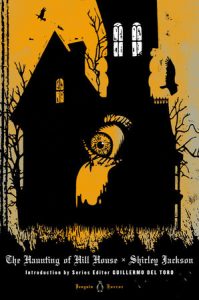


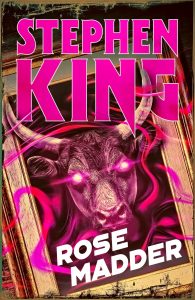
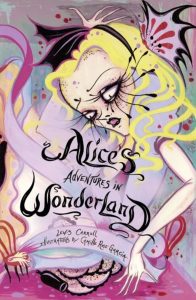
Personally, I was a little let down. The statues and horrors in the house, awesome. Spooky ghost girl who may or may not be dead/inhabiting her mom, cool. I was good with pretty much everything happening until the end when the father’s reveal occurs. While I’m still not sure if he’s in his own form of insanity or if he’s just a straight up serial killer who later attempts to appeal to his wife’s previous psychosis (when he yelled about Isabella and Danna being abominations etc.), it’s still a disappointment. It also felt really weird and abrupt. There’s all this time building things up and then – oh, nope, the dad did it. Sort of.
Especially when there are still odd elements. Mrs. Evers claiming to see Isabella’s soul in the window (that had promise – maybe dad was extracting souls to feed to his paintings and if Isabella got too far her body would collapse like a puppet with cut strings? No? Ok, bummer.) And then they’re on the weirdly convenient cart heading out and people are chatting like their employer didn’t just imprison the daughter and the help in a freaking dungeon. Just…what?
I’m also left with a lot of unanswered questions. Danna’s past seems to have a lot of influence on her. It sounded like she lost her own child, but the circumstances are never revealed. It sounded awful but her mind was clearly conjuring up some bizarre stuff so who knows what really happened. For a while I thought she might be an unreliable narrator, and a part of me still thinks she may be and perhaps none of this ever happened except in her mind. The first time she reminds herself things are real she checks her clothes, which are different from when they’re first mentioned but I don’t recall much time going by. But after that there’s nothing to tie down clothing to reality because we don’t know what she’s wearing before the dreams/hallucinations so it becomes irrelevant.
I got thrown off by the statues outside and the paintings Mr. Evers does. I thought the statues were all made by someone else and came with the house they bought, yet he’s in there making paintings just as grotesque. Sooo has he always made those paintings? Mrs. Evers doesn’t like the statues – why is she cool with him making those awful paintings and then hanging them all over the house? Isn’t that a red flag at least a little bit? Does he sell them? I don’t remember what he does or if it’s ever stated.
And are we ever going to go get Albert?
In a nutshell, I feel like this story could easily have been longer and given something more interesting to work with than “dad keeps people in basement.”
Nicole, thank you SO MUCH for your thoughtful, detailed comments! You were my first responder and I took waaay too long getting back to you due to internet problems and a bunch of other issues. The book club discussion ended up not being a proper discussion (back-and-forth) because of me, and I’m sorry.
It’s really difficult even now to sit comfortably with the idea that Mr. Evers is the BIG BAD because of all that you have pointed out in your response. Again I’m thinking about the tiny hints here and there that things may still be supernatural despite a very literal bad man seemingly pulling the strings — why build up aaaalll of those esoteric, otherworldly (muliple-wordly) morsels and hidden potential meaning in the art, then? Is it really meant to be a bait-and-switch, and nothing more. Even now I’m not sure. And that’s why the ending is so uncomfortable/abrupt/unsatisfying for many (when I was trying to figure out how I wanted to lead our discussion, I consulted a lot of reviews before doing so, and you’ve voiced what many readers of the book have felt).
OMG please write a book about an artist extracting souls to feed his demented paintings. I would read that. I would read the crap out of that.
Thanks so much for reading and participating in the book club!
I’m with Nicole. For me this novella started off so strongly with such evocative writing that I was a little let down by the non supernatural horrors. But I read it some months back so my memories of the specific things that bugged me are fuzzy. I would read something else by Shipp though. I enjoyed it enough for that.
Same. It was well written and had enough wild-weirdness that I wold try reading something by him again.
If you’re looking for the same on-brand weirdness (but minus the gothic atmosphere), I’d recommend Shipp’s Bedfellow. That was also a head trip of a read.
Re: Lane’s observation that the supernatural stuff here wasn’t so supernatural… I have to admit that I was also hoping this haunted house book would be a legit haunted house…it’s part of the reason why I picked it up! I think if it was more supernatural, it lies in all of the things hinted at on Mr. Evers’s side of the story, which of course, we never get a clear picture of.
I had really hoped to RE-READ this one before discussion, but that wasn’t in the cards for me. I read it in one sitting, and I know I had trouble with the hallucinations as well as the abruptness of the ending, and I was hoping upon a re-read things would feel a bit more seamless.
I really like Kristina’s observation, though, of how our narrator is emotionally compromised and vulnerable, which allows a gateway for the horror to really take hold. I feel that’s an important point to note, though as a reader I feel I could’ve done better with more specifics in regards to losing her son before getting thrown into the dream-like hallucinations. Then again, those dream-like hallucinations, when seen in film or television, have their ways of revealing the truth, which can be powerful and effective, especially since you can SEE what’s happening.
I was also reminded, in some ways, of THE SHINING. I haven’t read the book (I’m pretty sure it has the similar statuary instead of the maze in the movie), but the focus on the abusive, losing his mind husband really jumped out at me at the end as a point of comparison. Obviously, the husband is the real villain of the piece, but I can’t rule out something supernatural was happening, because I didn’t fully believe that Mrs. Envers’ breakdown was truly her acting like her daughter the whole time: I think there may have been a connection/possession of sorts, despite her daughter still living.
But the end was, ultimately, very abrupt for me, and I kept wondering what the point of the Atrocities themselves are given we only saw them in the beginning. After all, it’s the title of the novella, and while the novella itself is doing more with the word (because obviously, what was happening to Mrs. Envers and Isabella and everyone else at the hands of the husband are clearly atrocities), I wish the Atrocities themselves had played a bigger role in the climax.
I do think I’ll re-read this one day in order to take another stab and see how it plays out once I know the ending. And I definitely feel like I’d read something different from the author!
Shara, thank you so much for the detailed comments, and apologies for my delayed response because REASONS.
The Shiningwas all about those hedge animals/hedge maze (depending on which version you prefer) so I could definitely see your comparison there…I don’t know why your point that Mr. Evers is channeling Jack Torrance didn’t hit me sooner, but that’s a really interesting connection, where the compromised, artistic father is the batshit villain. Whether how much of this is meant to be a deliberate nod or not, I think Mr. Evers is definitely worthy of further examination. I do wish we got more of what was going on with him and Mrs. Evers. I really like your theory on possession and connection — would liked to have seen more of a resolution along these lines.
I have to confess that I don’t like novellas in general. It’s rare that I read a novella and think, “This was the right length to tell this story.” The Atrocities had so much potential and I wish I could make the author go back and finish it, because I think it could have been an amazing 350-page novel.
I found the statues to be scary but the aspect of the novella that creeped me out the most was how Robin, the housekeeper, kept insisting that everything was fine when it clearly was not. Like Shara, the statues/maze definitely reminded me of the designed hedges that come to life in the book version of The Shining. I loved Princess the capybara because if I became a wealthy eccentric, I probably would buy an exotic animal and put a tutu on it.
The book is so short that it had trouble building tension. It hits you with something creepy but then the moment is gone. I felt like we were promised a governess trying to educate a spirit but the whole “teaching a ghost” scene never really happens. I was also frustrated by the lack of back story and the unanswered questions. What happened to Danna’s son? There is a scene where Mr. Evers is painting with a symbol drawn on his forehead and tells Danna that his grandfather did the same thing–what the heck was that about? Was his whole family crazy or in some kind of cult? I wanted to know why Mr. Evers faked his own daughter’s death and imprisoned Albert. Just crazy didn’t feel like enough of an explanation. I also thought that the grotesque statues were going to play a bigger role in the story. Mrs. Evers kicking Mr. Evers in the nuts and everyone rolling out on a golf cart, leaving poor Albert half-dead in the basement (Justice 4 Albert), is one of the most anticlimactic endings that I’ve ever read.
One of the other things that annoyed me is the logistics of faking Isabella’s death. We’re clearly in a modern (if not current) time frame here with the cell phones and eighty-four-inch TVs. I can buy that Mr. Evers could have imprisoned Albert and then claimed that he was disgruntled and quit with no notice. But how could he claim that Isabella died and not have attracted the notice of the authorities? I know the Evers were supposed to be rich and eccentric but if this is modern times, you couldn’t just say, “Oh, my daughter died and we buried her in the yard” without someone calling the police. Robin and Raul clearly think that Isabella is actually dead and they’re free to leave the estate. It’s not like the family is living completely off the grid. I think I could have suspended disbelief on this point if it weren’t for all the other things that bothered me about this novella. Like everyone else, I am interested in reading other works by this author.
KELLY: Thank you so much for your detailed, thoughtful comments, and I’m sorry it took so long for me to respond to you (hooray for life dumping a bunch of negative crap on my plate, including internet problems!).
I agree that The Atrocities could definitely work if it was expanded into a novel, because there’s definitely more story that I want to see! And luckily Shipp’s really good at pacing, so if the book became 350 pages long I’d probably be able to make it through it!
— I think this just clinches it even more how much this book is tied to psychology and mental distress. This is a perfect example of delusion as a coping mechanism. We tell ourselves (and the people around us) things that are clearly untrue if it helps us cope with it. And this inability to admit or acknowledge truth can be creepy AF. I’m glad you highlighted this part of the book!
I think if your cup of tea is the slow-burning kind of tension, this book did not have that at all! But if you classify tension as mental or emotional strain, this book leaned more in that direction, I think. I agree re: the education of a ghost. Tor put that as part of the logline on the back of the book, and it’s part of the reason why I picked it up — it says “a haunting gothic fantasy of a young ghost’s education”…and it really didn’t explore this at all, so I do think it risks turning readers off to seek this book out based on that specific element and to not find it (as it’s more of a front for something else). It would’ve been more accurate for Tor to say, “a haunting gothic fantasy [with mention] of a young ghost’s education.” lol
There are certainly a lot of unanswered questions with that ending, and whatever the heck going on with Mr. Evers and his family and all of the weird psuedoreligious esoteric stuff they’ve dabbled in. I wonder if, just like the emphasis on the tutelage of a young ghost, it’s all a diversion and there’s not much more than that. I could see how that would be disappointing.
JUSTICE4ALBERT had me grinning ear to ear.
Thanks again for all of your great comments and excellent points!
I want to give thanks to everyone for reading and responding to The Atrocities. As you know, I had issues with my internet connection that required swapping out equipment, and then health stuff on top of that wacking out my availability and ability to comment in a timely fashion.
All of you gave this book great care and attention, evidenced by your detailed responses you included here. You brought up things I also felt when I read, but wasn’t sure how to bring into a discussion, so I think all of your responses build a more complete analysis of this book that is much appreciated.
Thank you so much, and we’ll see you soon for the March 27 discussion of An Illusion of Thieves!